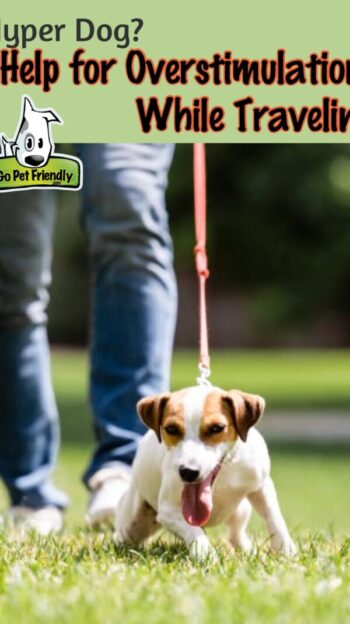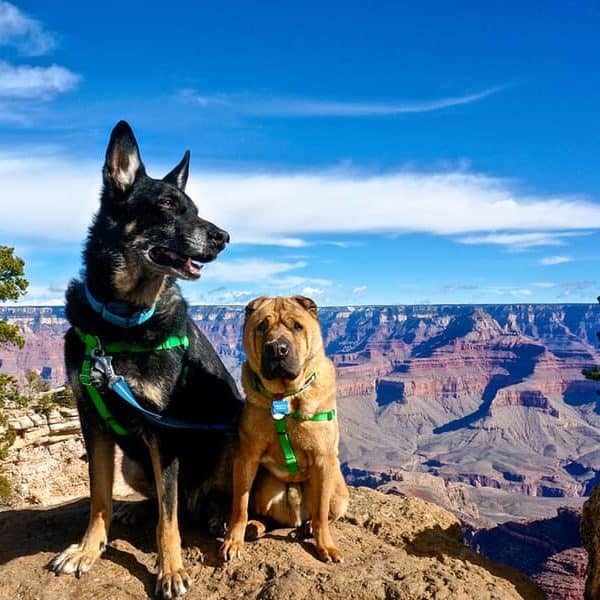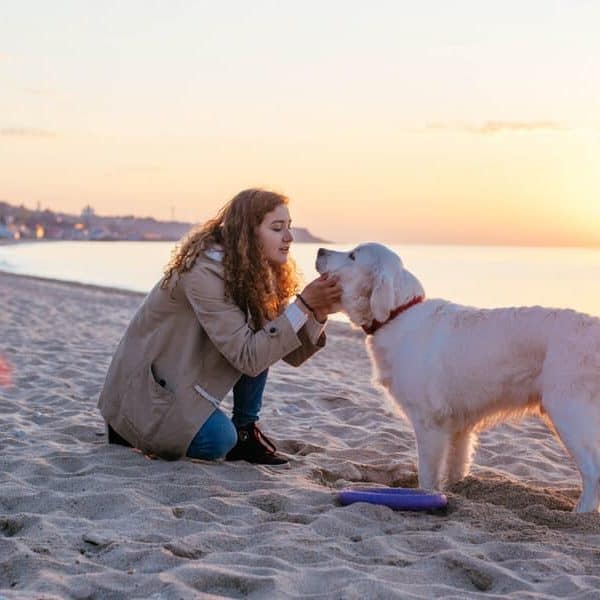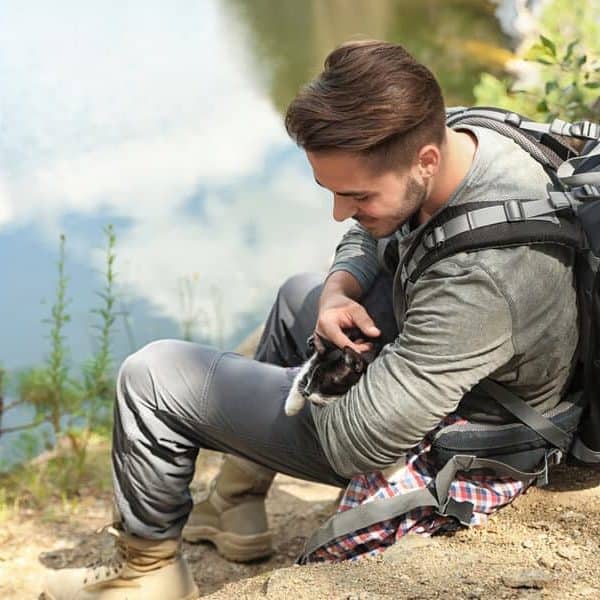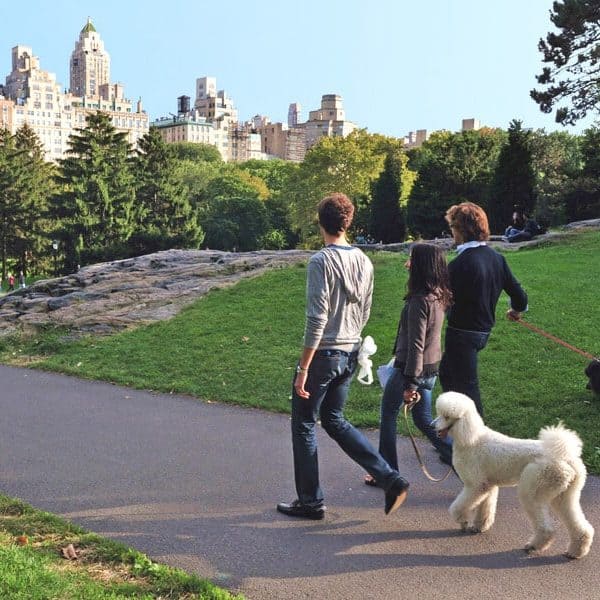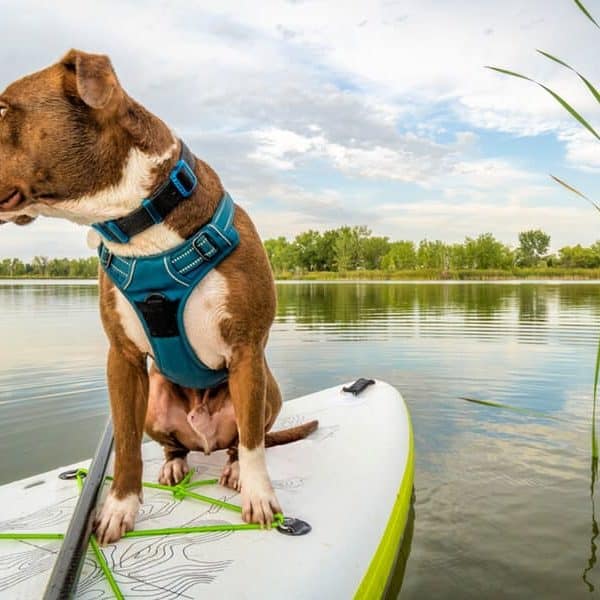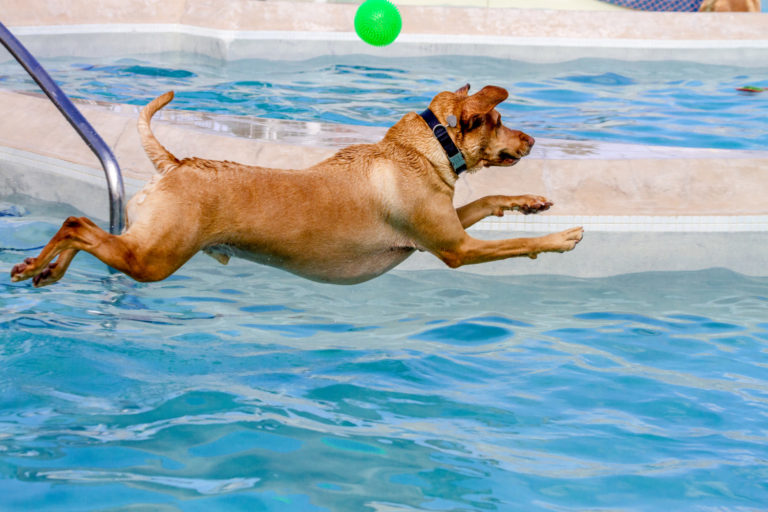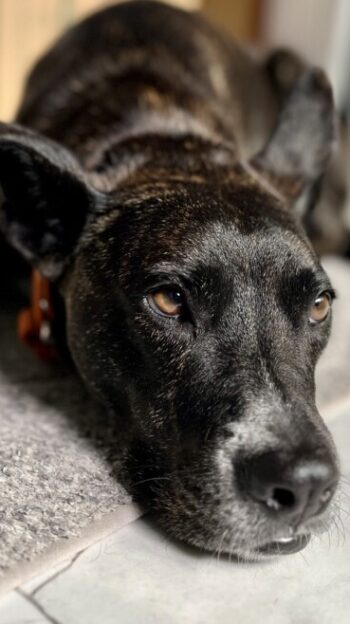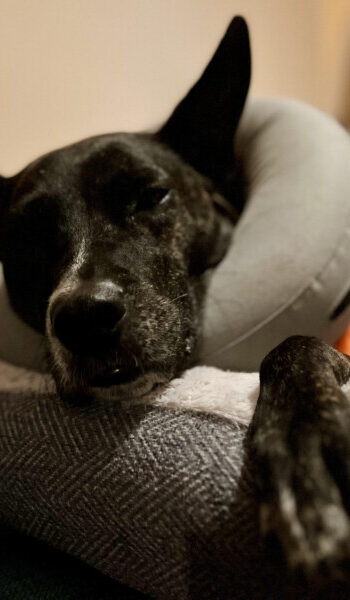It’s tempting to jam-pack your vacation itinerary. When you’re traveling, there are so many things to do and see! But new experiences can overwhelm your dog, causing him to act hyper. Learn how to recognize overstimulation, and learn how to help your pup if it happens.
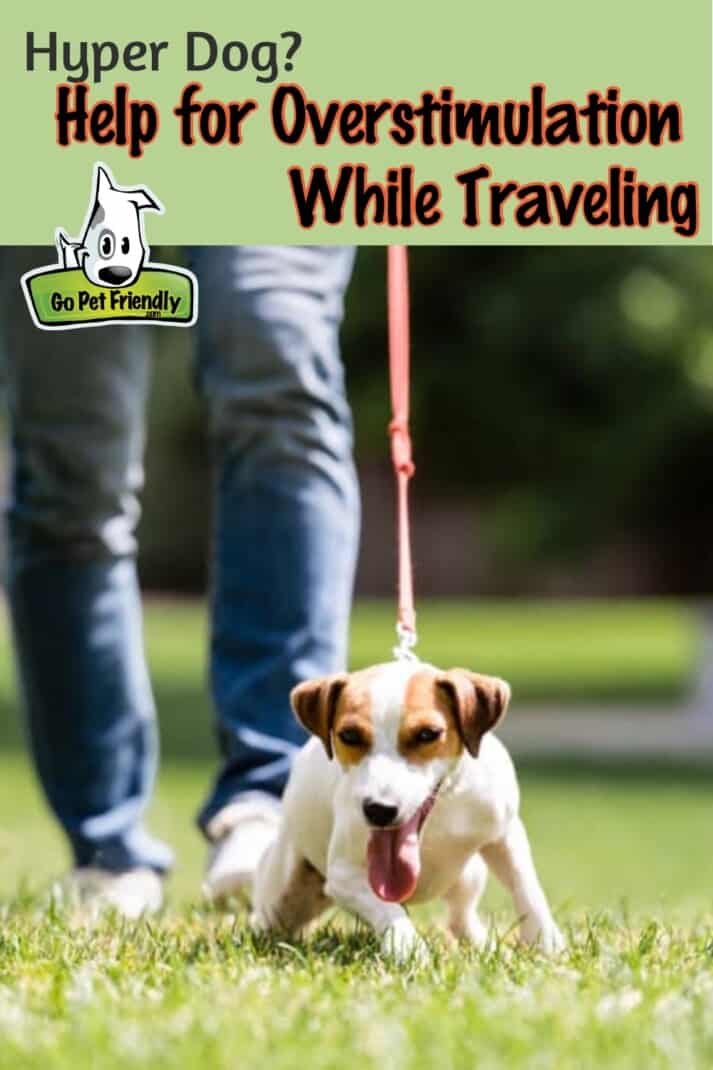
Think About Vacations Like A Dog
When your dogs are away from their home, their schedule, and their normal stomping grounds, it’s easy for them to get overstimulated.
It’s not rocket science – for a moment imagine you’re driven by your sense of smell and that your nose is thousands of times more sensitive to scents around you. You have grown accustomed to the aromas of your home, and (to some extent) your neighborhood. But then your people drive you to a new city, you stay in a hotel where other pets are also staying, and you walk routes you’ve never tread before. The experience would blast you with enough new odors to blow your mind!
Remember, that scientists estimate that a dog’s intelligence is equal to that of a 2-year old child. When they experience sensory overload, even the most mature pup can become like an overwhelmed human baby or toddler.

Finding Balance For Your Dog
Don’t get us wrong — most dogs love exploring new places! The key is finding the correct balance. Knowing your dog will help you decide how much exposure to new things will be comfortable for him.
Some dogs are more sensitive than others. And puppies and very old dogs can become overstimulated more easily than a resilient, middle-aged dog.
Depending on how much you travel with your pets, their personalities, and the intensity level of the places you visit, it’s possible that your pets could become overstimulated when you travel. So it’s important to know what that looks like. And to make a plan–before it happens to you.
READ MORE ⇒ Training Your Dog To Travel
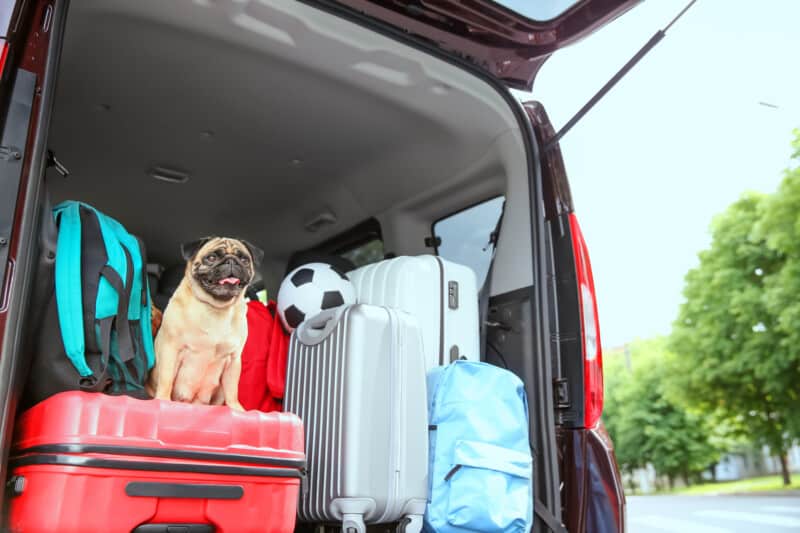
Signs Of Overstimulation
Every dog is different. And what one person considers a hyper bull dog might seem totally chill to someone who lives with a working border collie. No one knows your dog better than you, so you’ll have to be the judge. But here are some signs of hyper arousal to watch for:
1. No Manners
If your well-trained dog suddenly forgets how to sit, keep four paws on the floor, or come when called, they might be overstimulated. Be aware that until they’ve recovered from the sensory overload, you can’t expect your dog to remember their training. So don’t put them in a situation that could end badly.
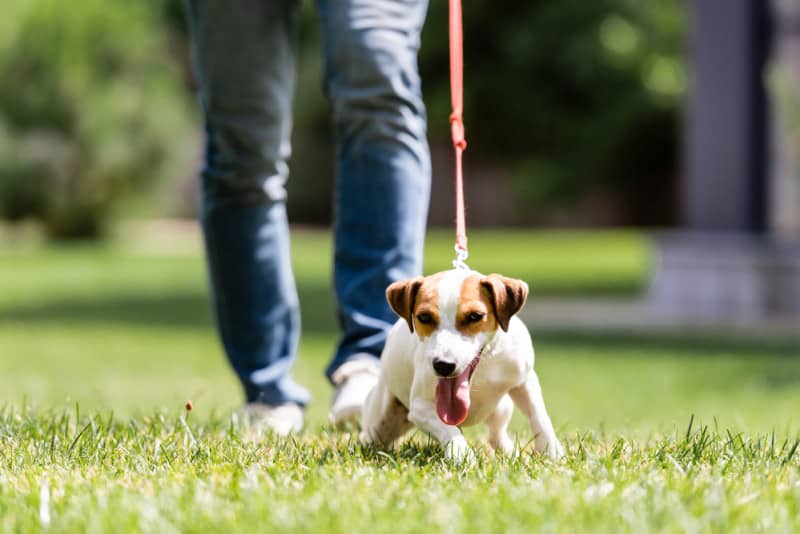
2. Pulling On Leash
If your normally mellow dog starts pulling with determination on his leash, it’s possible he’s over threshold. It’s important to be careful when walking a hyper dog. You could get hurt if your dog, who is overly distracted with new scents and experiences, decides to smell something on the other side of the street without warning.
READ MORE ⇒ Teach Your Traveling Dog To Stop Pulling On Leash
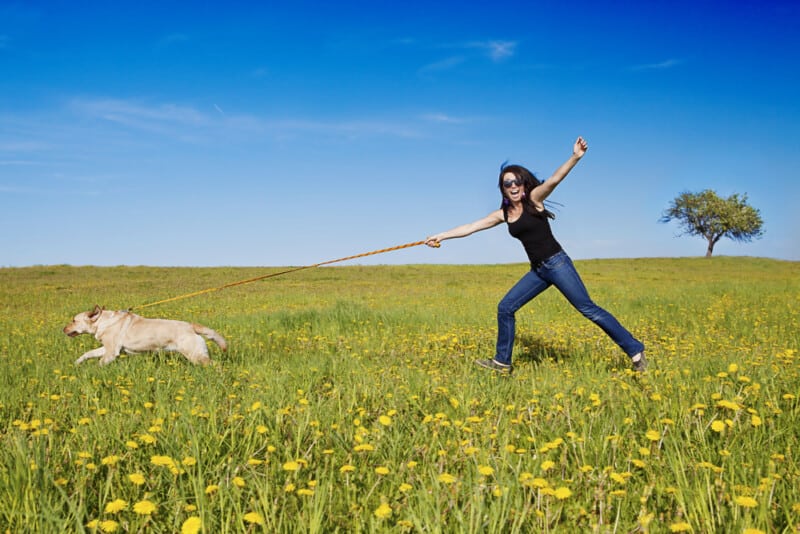
3. Increased Prey Drive
Your dog might be ho-hum with the deer or squirrels in your backyard, but an overstimulated dog could have a different reaction. Remember, his circuits are on overload. The sudden appearance of an armadillo or lizard could unleash your dog’s inner hunter. So be prepared when hiking in new places.
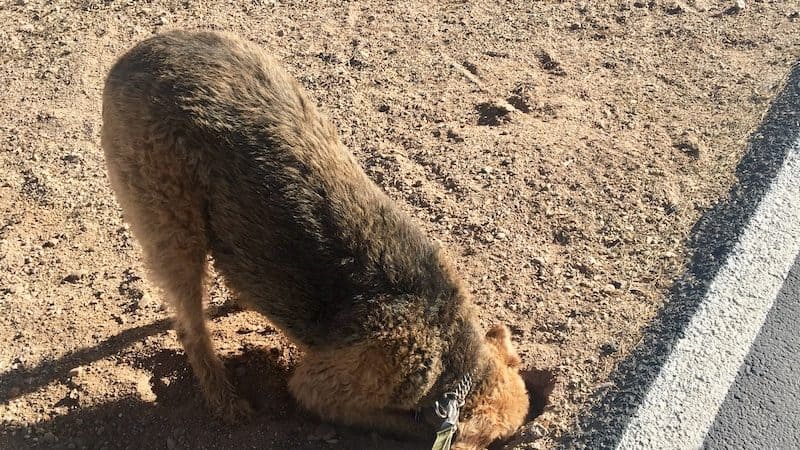
4. Barking Or Whining
Overstimulation could also cause your dog to vocalize more than usual. Being overwhelmed is uncomfortable, and your dog might bark or whine to release the tension.

5. Refusing Food
Do you rely on treats to regain your dog’s focus at home? Well, it might not work if your dog is overstimulated. At the very least, you’d need a much higher value treats to break through the static. Think pieces of rare steak or chicken liver instead of plain old kibble or peanut butter treats.
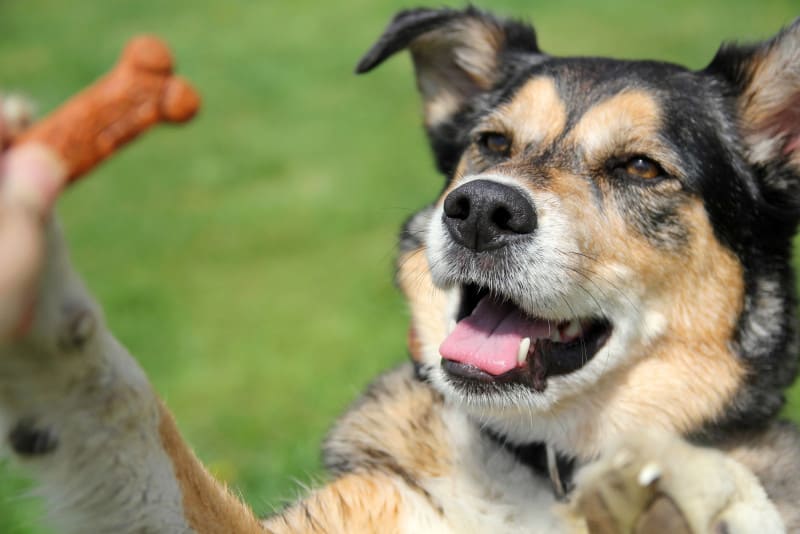
Don’t get frustrated with your dog if they show these behaviors. Yes, it can be irritating, but they can’t help themselves. And with a bit of care, you’ll have your familiar travel buddy back in no time.
Hyper Dogs: How It Looks In Real Life
The first time I witnessed dogs experiencing hyper arousal was while we were traveling with Ty and Buster.
We had driven to San Antonio for the weekend. After a long trip, with several stops along the way, we made it to our hotel just in time for dinner.
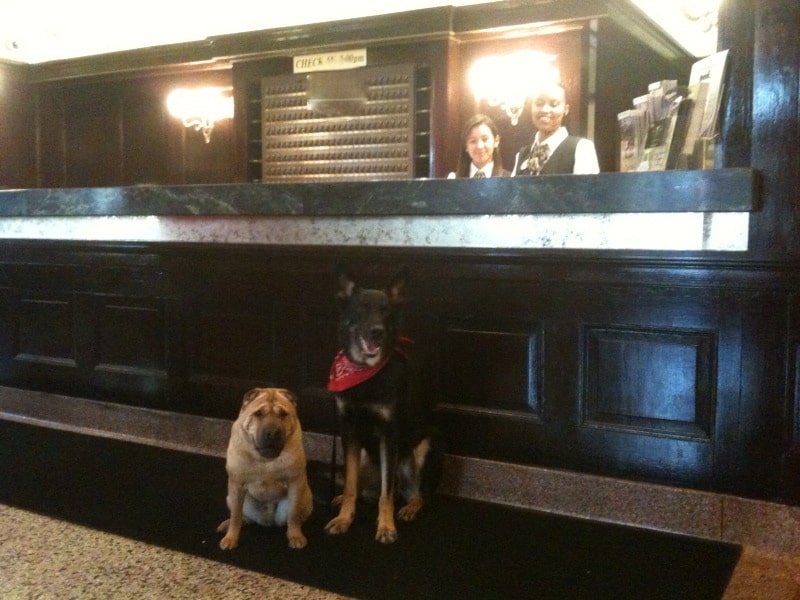
We expected the boys to be tired. But Buster was all keyed up!
He sniffed the entire room. Several times.
Checked out the sofa.
Inspected the bed.
Charged up and down the hallway from the bathroom to the living room and back.
Admired the view from the balcony.
And got a drink from the toilet. *I didn’t get there in time to stop him!*
It took Buster about an hour to relax enough to lay down, but every time Rod or I moved, he was up again to see what we were doing.
We decided to order room service and watch a movie so Buster could chill.
READ MORE ⇒ Barking Dogs In Hotel Rooms: Tips For A Quiet Stay
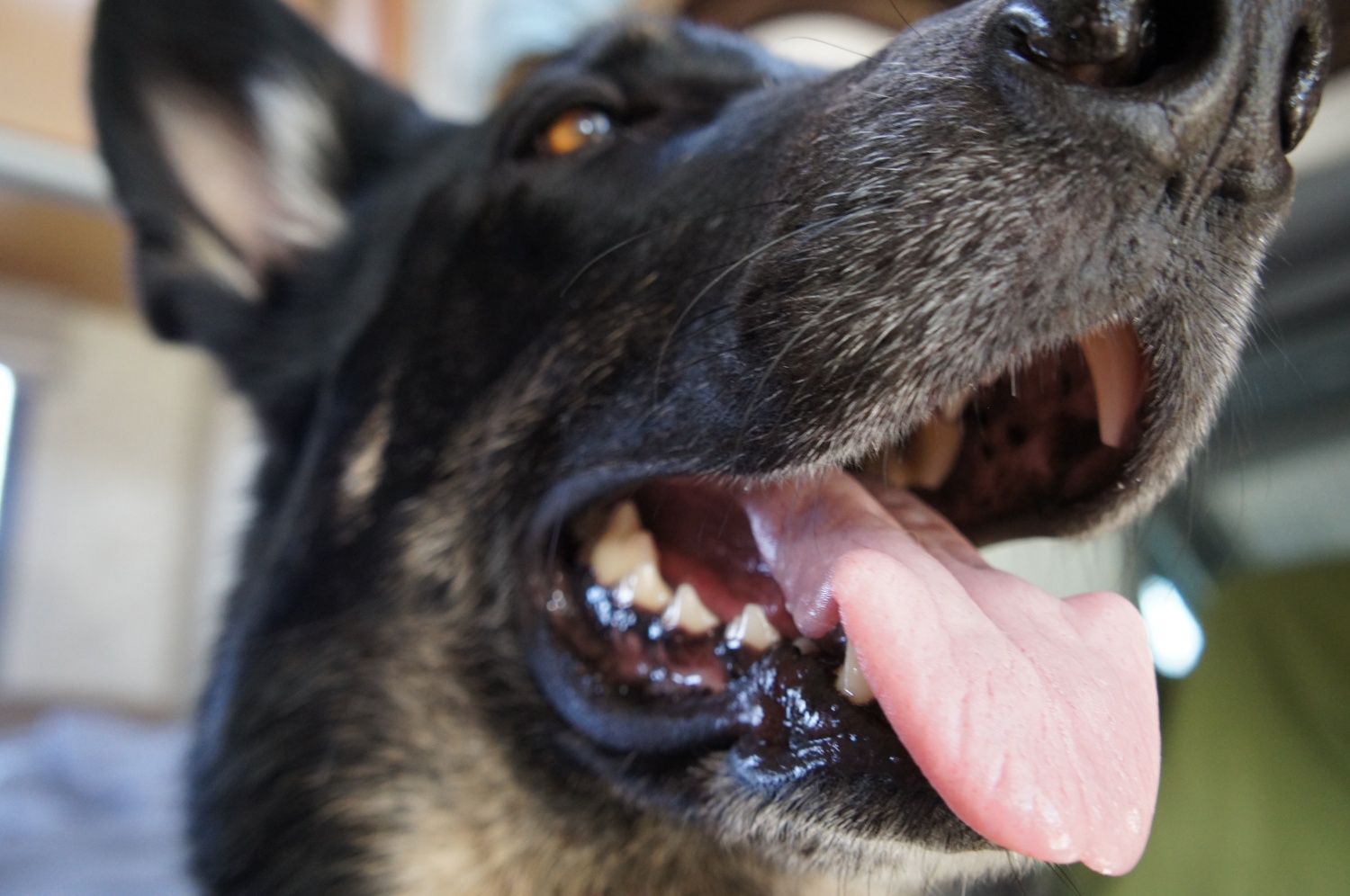
The next day, we headed out to explore. The boys were understandably drawn to every bush, tree, and patch of grass. So we took our time, allowing them to check the p-mail left by every dog who had passed that way. After all, they were on vacation, too!
READ MORE ⇒ Pet Friendly San Antonio: Exploring The River Walk
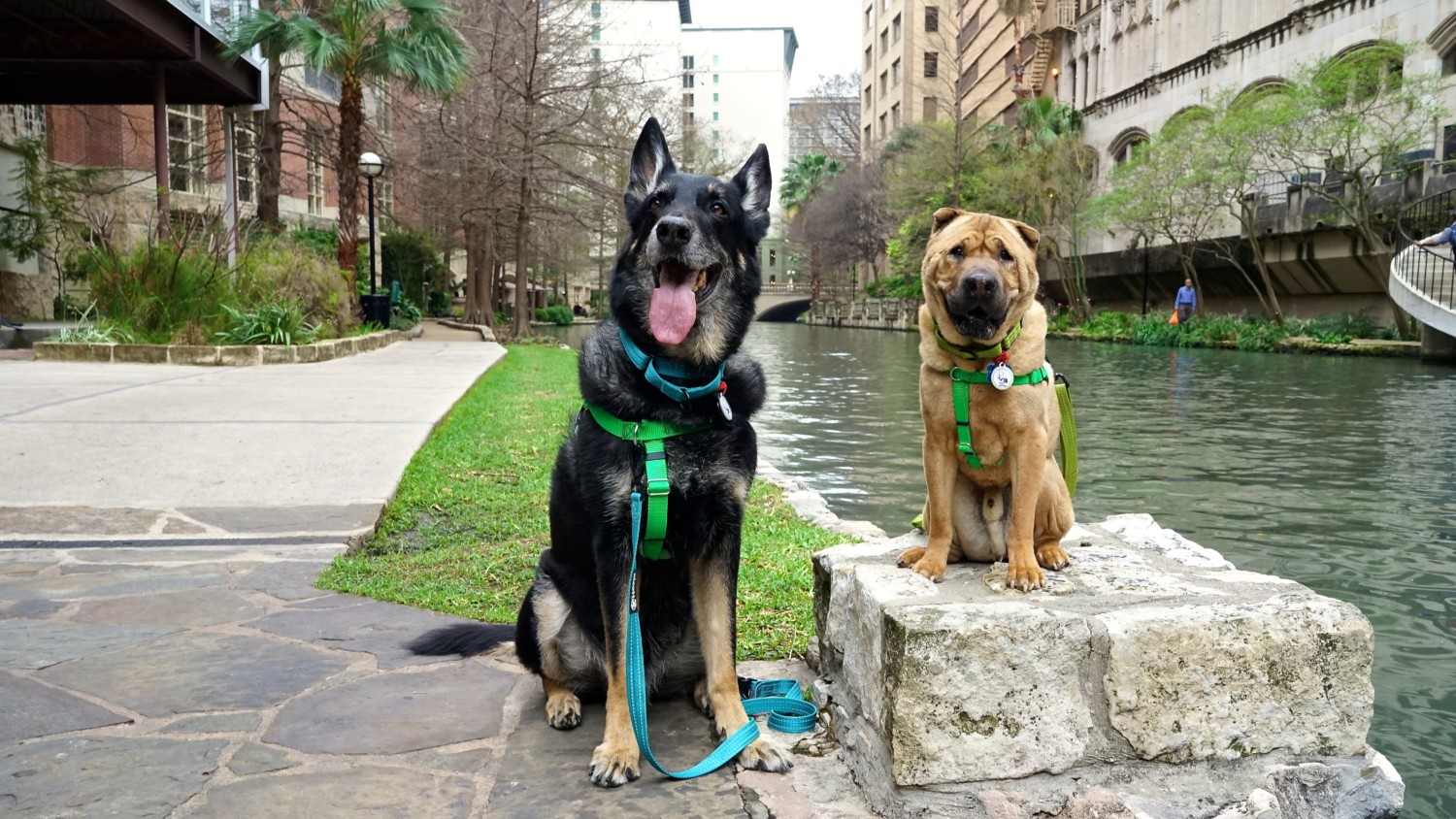
But after a few hours meandering around the city we noticed the dogs were both pulling on their leashes. Neither was even registering our requests to pay attention. And both had stopped exploring their surroundings. Not even treats could capture their interest.
They had reached the point of maximum saturation and they needed a break. Immediately. We beat it back to the hotel and decompressed – for all our sakes.
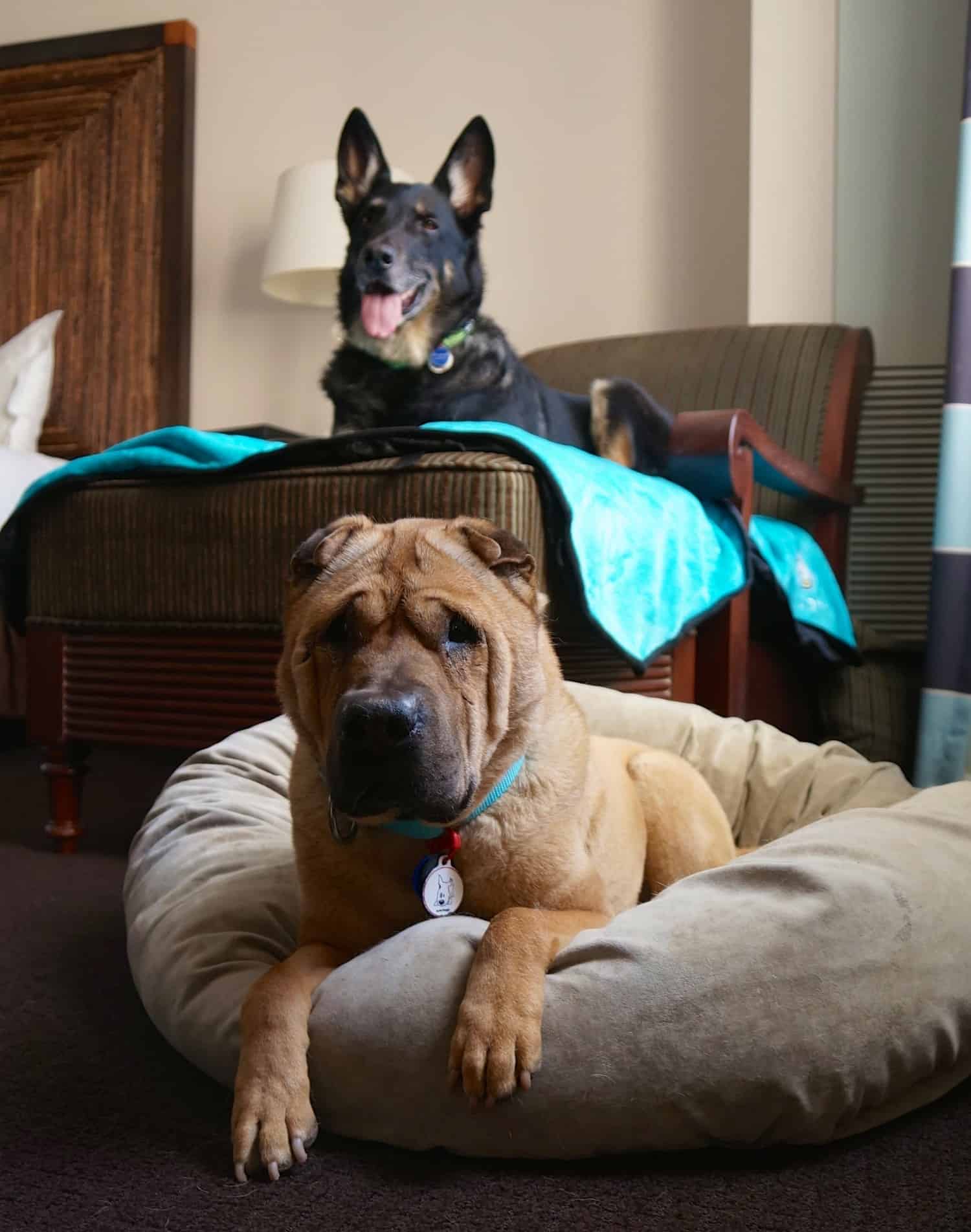
Helping Your Hyper Dog Settle Down
If your dog becomes hyper aroused, will you know what to do?
The good news is, overstimulation is not a fatal condition … you can still take your pets along for the ride! Here are a few tips to help your pets recover if they get overwhelmed:
1. Provide A Comforting Retreat
Make wherever you’re staying a temporary “home base.” When you arrive, let your dog explore his temporary home until he’s content. Whether it’s a pet friendly hotel room, or the guest room at your in-law’s, you want the place you’re staying to be a sanctuary where you can all relax. Use your body language to convey that message to your pup.
That means that when you arrive you shouldn’t be in a rush to dump your luggage and run. Instead, put up your feet, grab a book, or take a nap. Everything you’re hoping to see and do will still be waiting when you’re all ready.
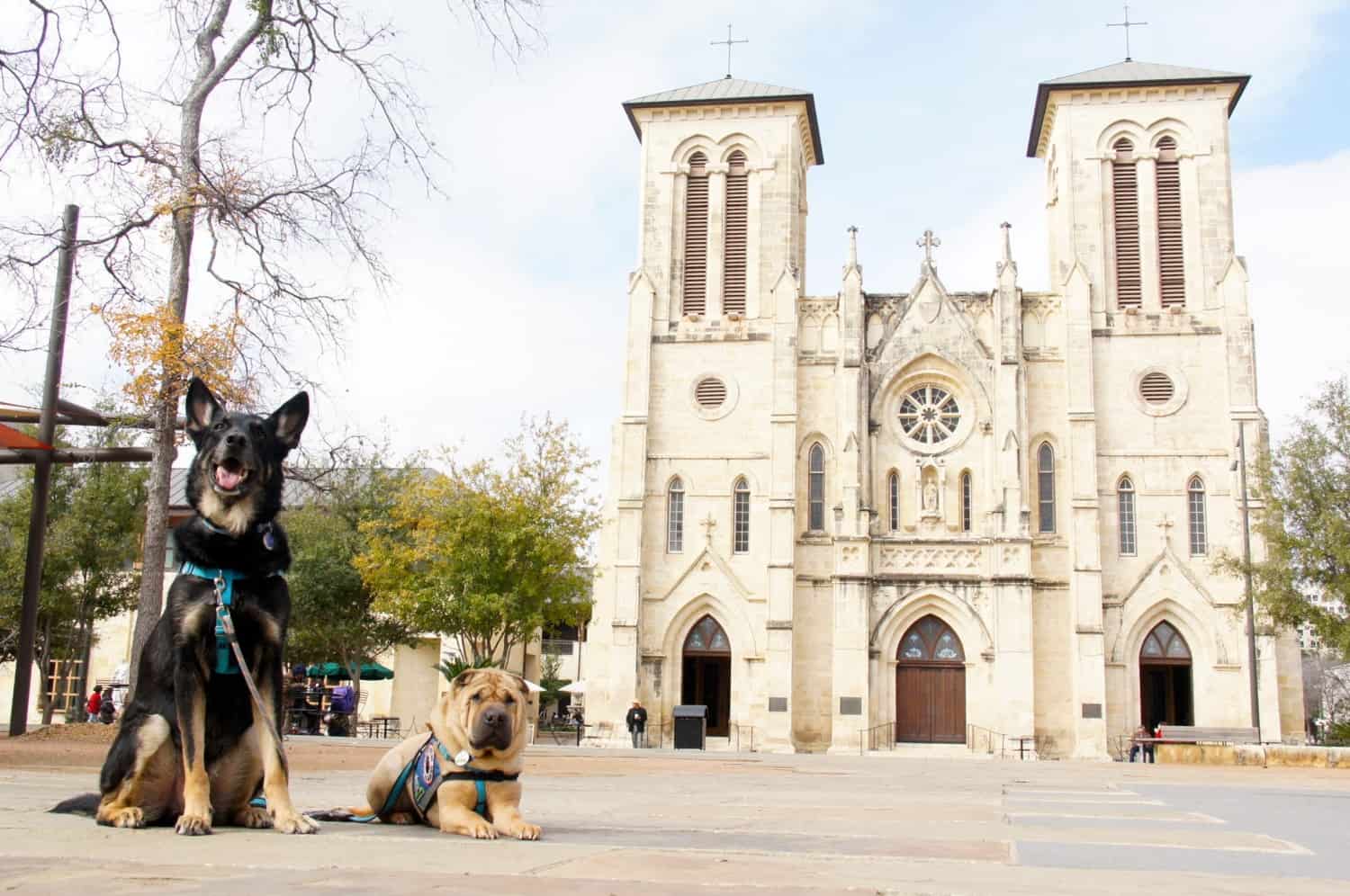
2. Bring A Bit Of Home With You
Bring something that smells like home. A favorite blanket, toy, or your dog’s bed will make your pup more comfortable, allowing them to relax in a new place.
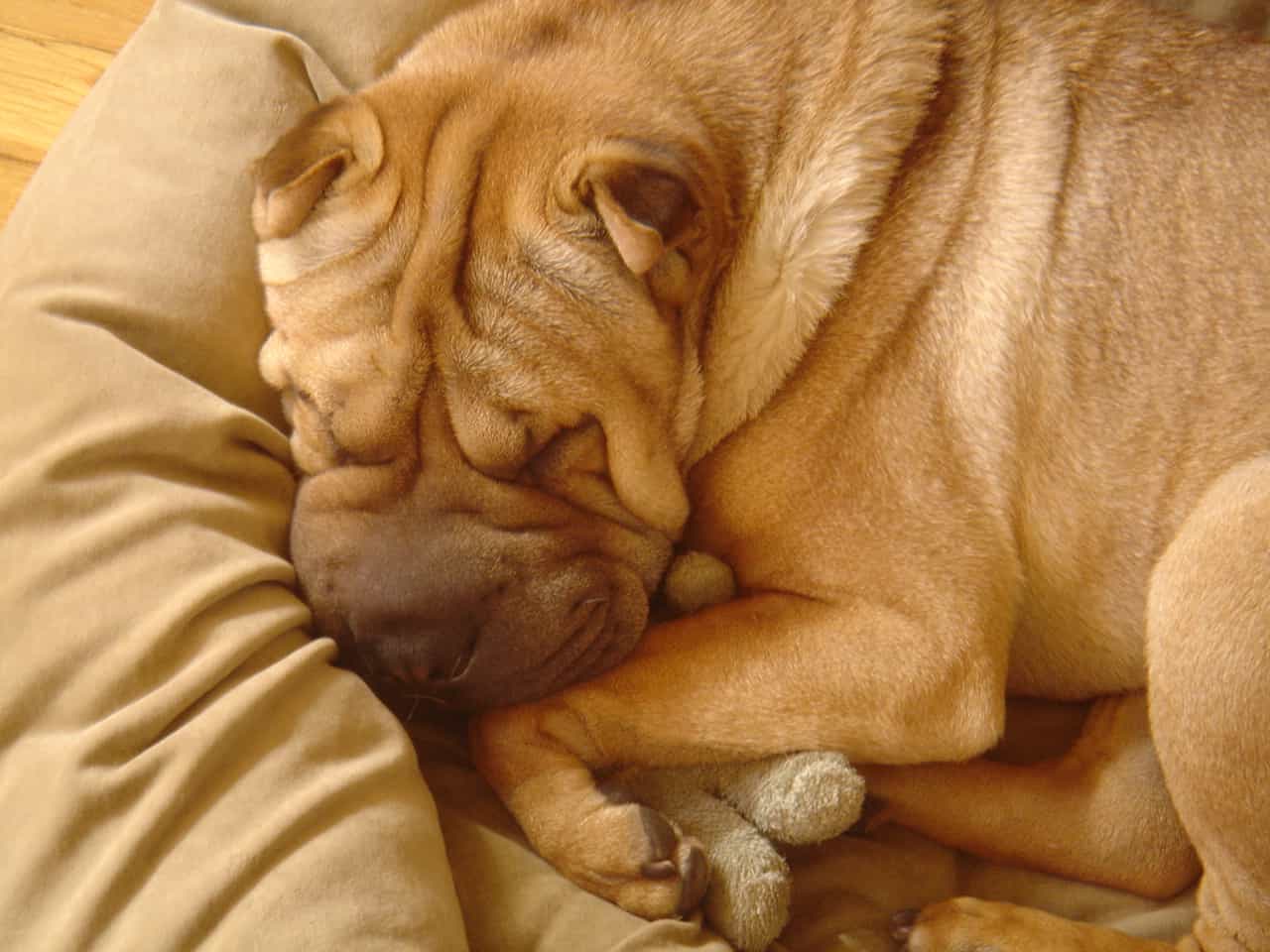
3. Use A Consistent Potty Spot
When you arrive in a new place, pick a spot you want your pet to relieve himself. And then use that spot for the extent of your stay.
Giving your dog a consistent place to do his business will help him focus on his duties, rather than taking another opportunity to explore.
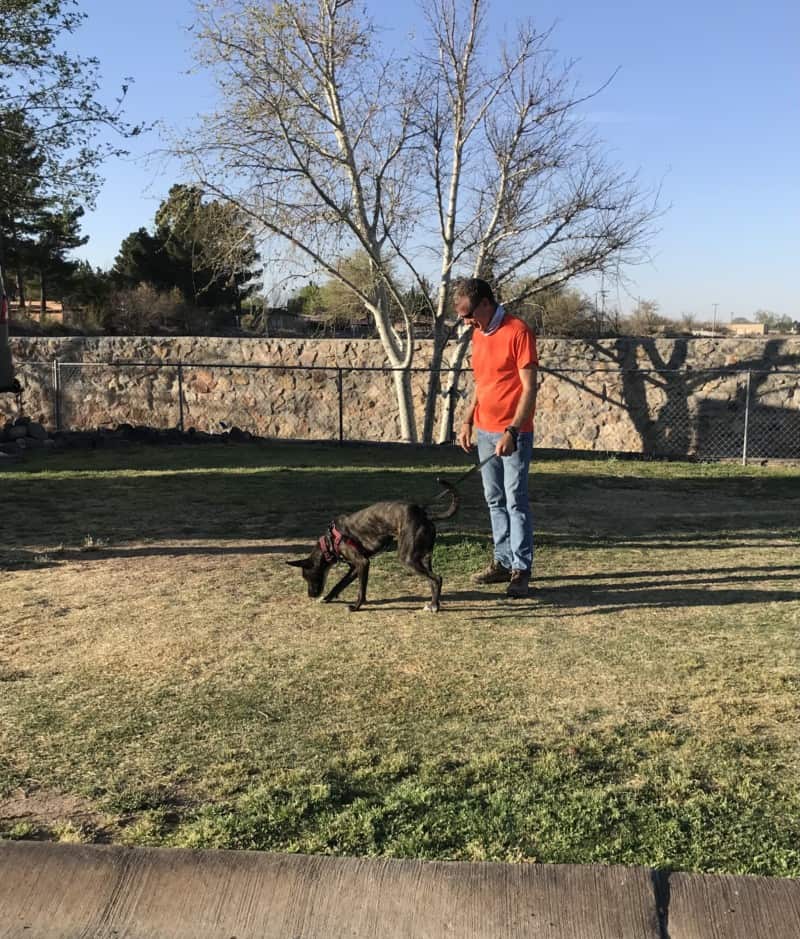
4. Take Breaks
When you’re ready to start exploring, be on the look out for behaviors that indicate your dog is reaching his intake limit. As soon as your pup begins acting distracted, relapsing into old behavior patterns, or forgetting his obedience skills, it’s time for a break. At that point, it’s in everyone’s best interest for you to find a quiet place to unwind.
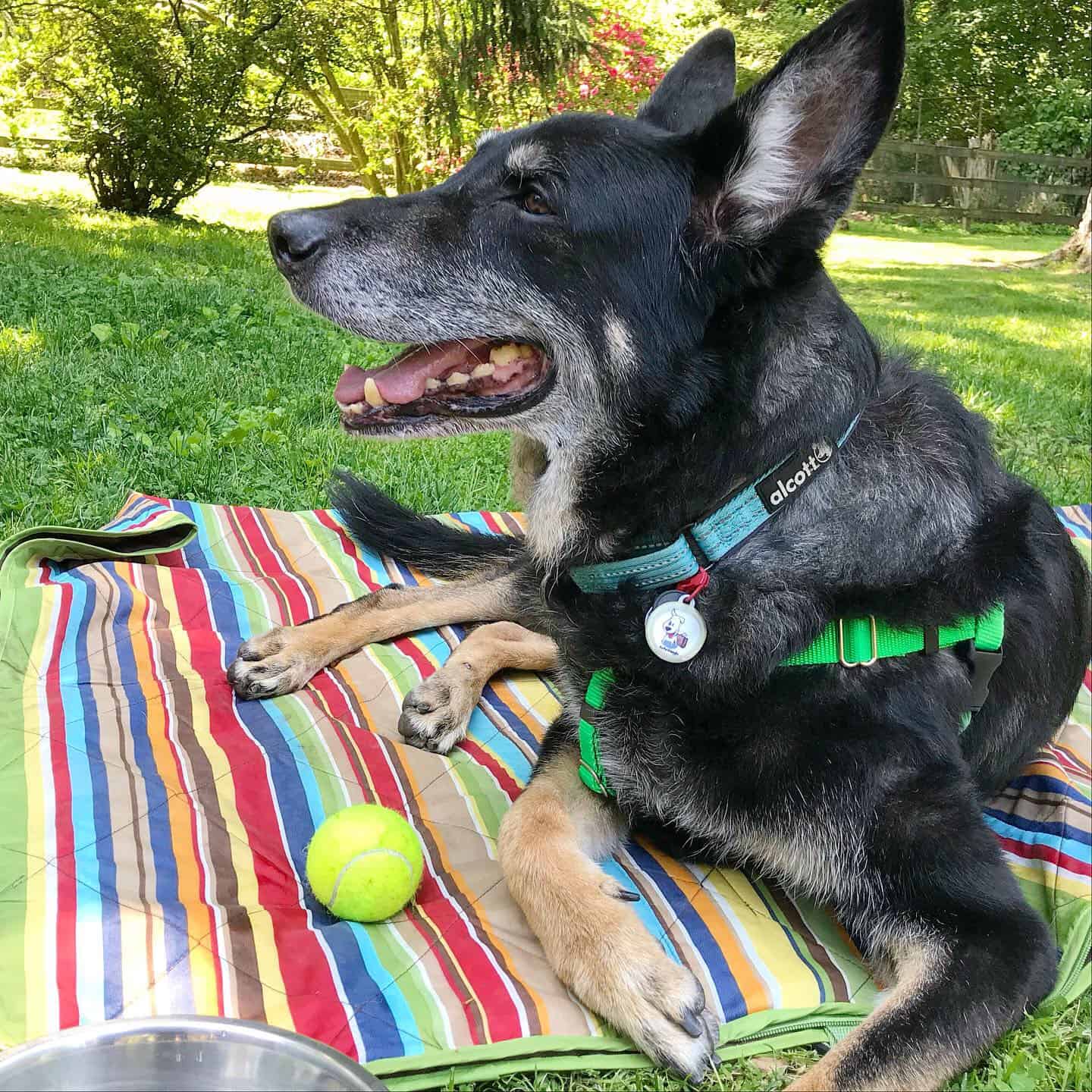
4. Encourage Calming Activities
Dogs find sniffing and licking relaxing. Think of it like humans taking a deep breath to calm their anxiety.
You can encourage your dogs to calm themselves by giving them something to lick or sniff. For example, spread squeeze cheese, peanut butter, or cream cheese on a lick mat (Amazon affiliate link). Or find a quiet corner of a park and scatter some of your dog’s kibble in the grass for them to find. As they use their tongues or their noses, their arousal will decrease.
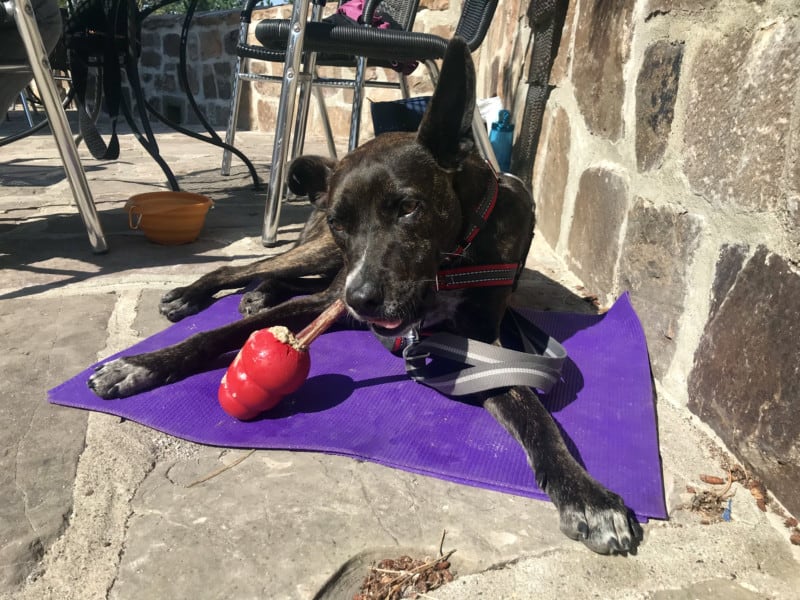
5. Teach Your Dog To Settle
Finally, some dogs need help finding their off switch. You ming have to teach your dog how to rest in different environments. (Obviously, this is something you will have to do beforehand.)
An excellent way to teach your dog to relax is teach the “mat” cue.
Start by putting a towel or mat on the floor. Reward your dog with a treat for any interaction with it–looking, moving toward it, stepping on it. Gradually, you will only reward them for lying down on the mat.
When your dog is reliably laying on the “mat” whenever you put it down, start building up the distractions they can handle.
READ MORE ⇒ 5 Commands Every Traveling Dog Should Know And How To Teach Them
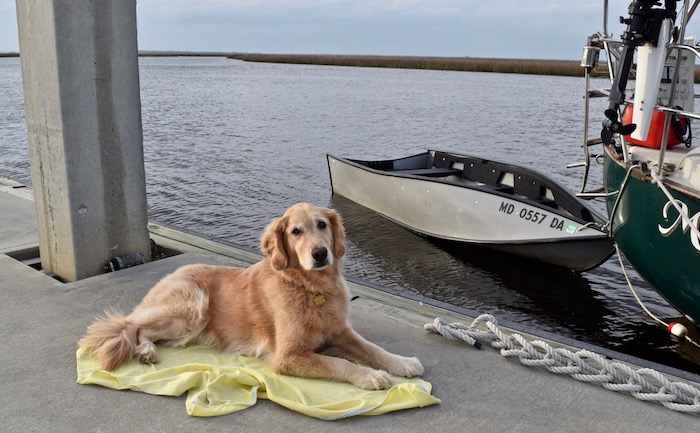
If you use something lightweight for your “mat”, like a towel or section of old yoga mat, you can bring it with you when you travel. It will give your dog a comfy place to relax no matter where you are. And it will come in especially handy when your dog learns to use it on pet friendly restaurant patios!
(For a deeper dive on the subject, check out Dr. Karen Overall’s Pet Relaxation Protocols.)
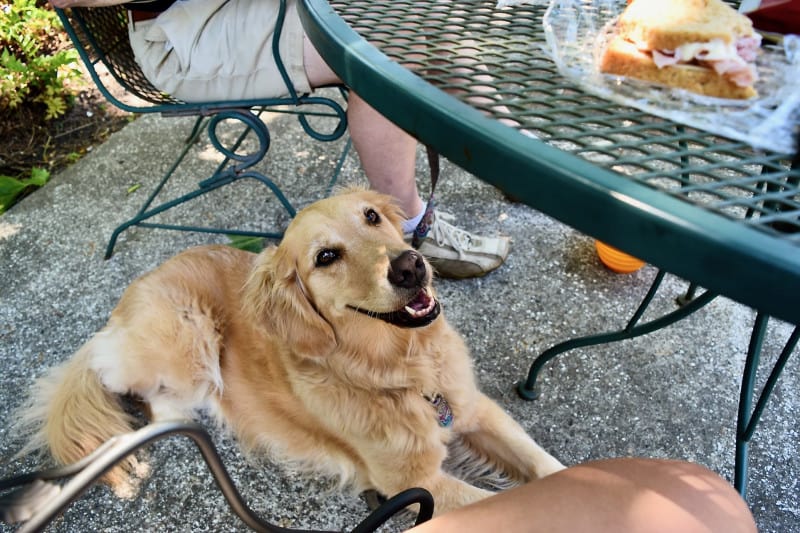
Managing Hyper Dog Behavior
Managing your dog’s hyper behavior while you’re traveling requires you to stay patient. Remember that your dog is experiencing new things and is doing his best to take it all in. Learning to take everything in stride is a skill that takes time.
Expect to spend a fair amount of time watching your pooch investigate his surroundings. Remember, your dog is not being difficult or obstinate. He just has to follow his nose! And he’s practicing calming himself with all that sniffing.
Walking a hyper dog who is overwhelmed by his surroundings is not fun for anyone. But, with care, you can build his confidence and everyone will have a good time on your next pet friendly vacation!
Has your dog experienced overstimulation? What brought it on?
Amazon Affiliate Disclosure: GoPetFriendly.com LLC is a participant in the Amazon Services LLC Associates Program, an affiliate advertising program designed to provide a means for website owners to earn advertising fees by advertising and linking to amazon.com, audible.com, and any other website that may be affiliated with Amazon Service LLC Associates Program. As an Amazon Associate, the owner of this site earns a commission from qualifying purchases.
